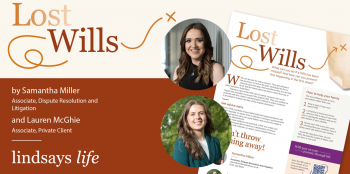Businesses may face commercial disputes for a number of reasons, from recovering debts and contractual issues with suppliers, to disagreements with business associates.
The need for businesses to have faster and more accessible justice to help them deal with low-value commercial claims prompted new court procedures being introduced last year. The new rules, called Simple Procedure, have also lessened the previously often adversarial approach in dealing with court actions, opening the doors to more opportunities for negotiation at an early stage.
One year on, Marianne Stirling, our Debt Recovery Manager, provides a detailed assessment of the extent to which the laudable objectives of the Simple Procedure Rules are, in our experience, being met.
What is Simple Procedure?
Simple Procedure was brought in to replace small claims and summary cause procedures, including debt recovery actions for sums up to £5,000.
We entered the brave, new world of Simple Procedure on 28 November 2016 (for payment actions, at least – other types of action are scheduled to follow next year with the Simple Procedure (Special Claims) Rules). The new rules promised quicker, jargon-free court actions, with electronic court forms and interventionist Sheriffs or Summary Sheriffs.
Simple Procedure one year on!
Raising actions
Significantly more input is now required at the commencement of a court action. The claim form is much more comprehensive than its predecessor. The court expects copies of relevant documentation and list of witnesses at the outset, making it essential for claimants to provide their solicitors with full information and all potentially relevant documents at that stage.
In the context of debt recovery actions, that may extend to not just the outstanding invoice and any purchase order or contract, but may include e-mail correspondence, letters and notes of meetings.
Serving actions
Multiple forms must now be sent to respondents when serving actions, all more detailed than the equivalent forms under the old system. While there are clear benefits in providing more at an early stage, getting the service documentation correct is proving a challenge for some claimants, while respondents certainly have more reading material to work through!
The response
In cases where the respondents do not lodge a response, a decision form and order may be granted in favour of the claimants. That form and order is the equivalent of the ‘decree’ in the old system. When a response is lodged, it may be to accept liability and, if appropriate, seek time to pay the sum owed. Alternatively, the response may set out a basis for disputing liability.
Further procedure
If an application for time to pay has to be determined or the action is defended, the papers are passed to a Sheriff or Summary Sheriff for consideration and often a case management hearing will be fixed, although alternatives such as mediation are an option at this stage. If proceeding by way of a case management hearing, the initial focus of the hearing is usually to explore parties’ positions and the scope for settlement. In the absence of agreement or the basis of agreement, a full evidential hearing will usually be fixed.
Although, this aspect of Simple Procedure differs little from its predecessor, in practice, we are finding the court to be more engaged in the detail of the dispute and willing to highlight any apparent weaknesses in positions.
Decision form and order
When a decision form and order is granted it usually cannot be enforced for 28 days from the date it is sent. This may be of assistance to parties found liable to make payment, affording them an extra two weeks to settle their liability than was previously the case. For claimants, however, it adds two weeks to the timescale for payment and/or enforcement action to commence in circumstances where they have already waited months – or occasionally years – for payment.
Simple Procedure online
One of the main benefits of the new system was the promised electronic case management system enabling court actions to be raised, documents lodged, fees paid and progress tracked online. Although the system was scheduled to launch in October 2016 unfortunately it remains ‘off-line’, with the latest update from the Scottish Court Service indicating it is now expected to be in place around April 2018.
Given that the intention of Simple Procedure was to make low-level court actions simpler and faster for all parties involved, the introduction of the online case management system with its anticipated benefits will be very welcome.
Simple Procedure – Simple Conclusion
Although Simple Procedure requires more work at an early stage, with extensive ‘form filling’ and paper handling, the additional information means parties’ respective positions are more readily apparent at an early stage. That, in turn, allows for better informed assessments of respective strengths and weaknesses at the outset. It is our experience that the increased transparency, together with a welcomed interventionist approach from Sheriffs and Summary Sheriffs, is contributing to the early resolution of many claims and, at the very least, increased engagement from the respondents. The pending implementation of the on-line system should also significantly assist in Simple Procedure more fully delivering on its main objectives.
Whatever the reason for the dispute arising or need for debt recovery action, professional advice is vital either to help resolve the issue or to prevent unnecessary delays or costs where they can be avoided.
Please contact Marianne Stirling in our Dispute Resolution and Litigation team if you would like more information on debt recovery or the Simple Procedure rules.
Published 27 November 2017.
Meet the team

Marianne Stirling
Title: Debt Recovery Manager and Accredited Debt Recovery Paralegal
Location: Glasgow













